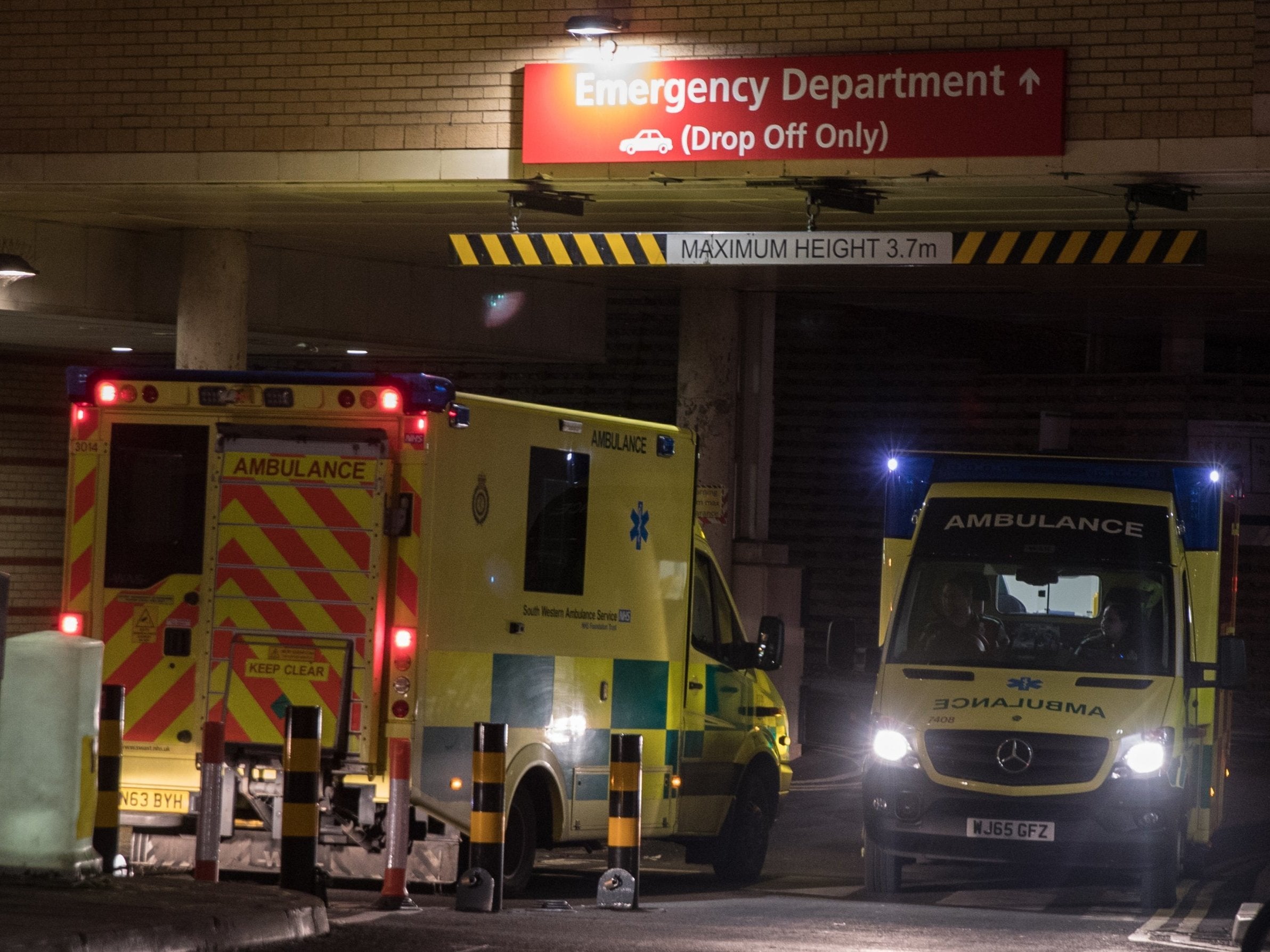NHS waiting times: A&E four-hour target set to be scrapped, plans reveal
Pilots in 2019 will decide the fate of the flagship emergency room standard that has not been met since 2015 and which NHS bosses say is no longer fit for purpose

Your support helps us to tell the story
From reproductive rights to climate change to Big Tech, The Independent is on the ground when the story is developing. Whether it's investigating the financials of Elon Musk's pro-Trump PAC or producing our latest documentary, 'The A Word', which shines a light on the American women fighting for reproductive rights, we know how important it is to parse out the facts from the messaging.
At such a critical moment in US history, we need reporters on the ground. Your donation allows us to keep sending journalists to speak to both sides of the story.
The Independent is trusted by Americans across the entire political spectrum. And unlike many other quality news outlets, we choose not to lock Americans out of our reporting and analysis with paywalls. We believe quality journalism should be available to everyone, paid for by those who can afford it.
Your support makes all the difference.The NHS is set to abandon its flagship guarantee that patients at A&E will be treated, admitted or sent home within four hours, plans unveiled by health service bosses show.
New targets measuring time taken to initially assess patients on arrival, waits for those who are most urgent and an average wait across all patients will be piloted by NHS England this year.
A final decision will be taken on the four-hour standard’s future ahead of 2020-21, but NHS England argued the new measures will give a more accurate picture of emergency room pressure and can end “hidden long waits”.
The four-hour standard has not been met nationally since 2015 and performance hit record lows this year despite a milder winter than in 2018.
A decade-long funding squeeze at a time when the health service is seeing more patients than ever has not helped performance, and the NHS has more than 100,000 staff vacancies in England.
Cancer treatment standards and a waiting times for planned operations – which exceeded 4 million patients last year – have all deteriorated alongside emergency care.
These issues prompted a national review of waiting times, led by NHS England medical director Professor Stephen Powis, announced alongside new investment in the health service.
“As we build an NHS that is fit for the future, now is the right time to look again at the old targets which have such a big influence on how care is delivered, to make sure that they take account of the latest treatments and techniques, and support, not hinder, staff to deliver the kind of responsive, high-quality services that people want to see,” Professor Powis said.
Around one-fifth of emergency admissions occur in the 10 minutes before the four-hour window would have been breached – suggesting clinical decision making is being sidelined by the limit.
Patients in mental health crisis will be among those A&Es should aim to treat within one hour under the new urgent case criteria.
There will also be a commitment to give patients with suspected cancer a “definitive diagnosis” with 28 days of being urgently referred by their GP, and trials of a six-week limit to access medical tests for planned care.
However, doctors leaders have warned against a “return to the days of endless waiting”, saying the four-hour standard is vital for ensuring flow through hospitals and would only benefit politicians if removed.
The Royal College of Emergency Medicine has called for the four-hour standard to be preserved alongside additional “complementary” measures for more urgent patients.
“While we are dismayed by many of the myths being pedalled around the four-hour standard, we are keen to ensure that any changes are not imposed due to political will but are developed responsibly, collaboratively and are based upon clinical expert consensus in the best interests of patients,” RCEM president Dr Taj Hassan said.
Patient groups said that the public were not opposed to more sophisticated targets or potentially waiting longer for less urgent issues, but changes must work better for those who are ill.
“When the four-hour target was introduced in 2004 it helped to significantly reduce the lengthy waits faced by many patients,” said Healthwatch national director Imelda Redmond.
It will be supporting pilots over the coming months to see if the changes can improve patients’ experience of care, as well as safety and quality.
“Ultimately we want to see targets free up hard working A&E departments so they can concentrate on delivering the best possible care for their patients,” Ms Redmond added.
The impact of the new targets will be reviewed in the pilot areas through 2019 and any changes would take effect by April 2020 if they are deemed a success.
Join our commenting forum
Join thought-provoking conversations, follow other Independent readers and see their replies
0Comments